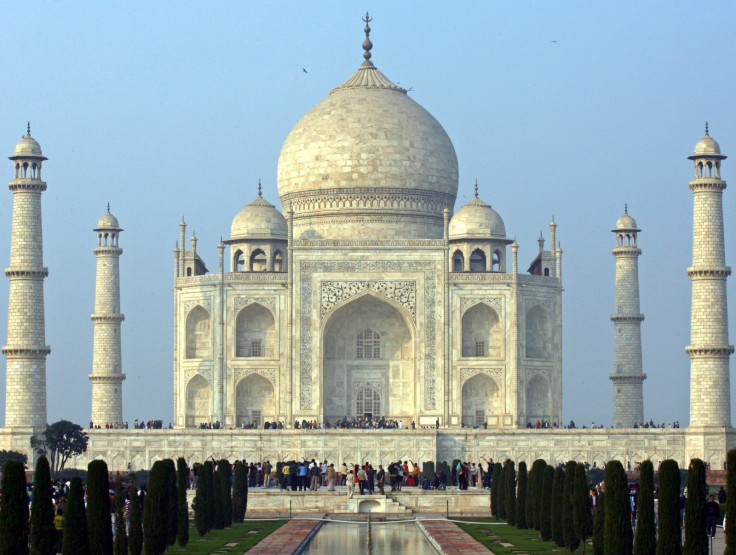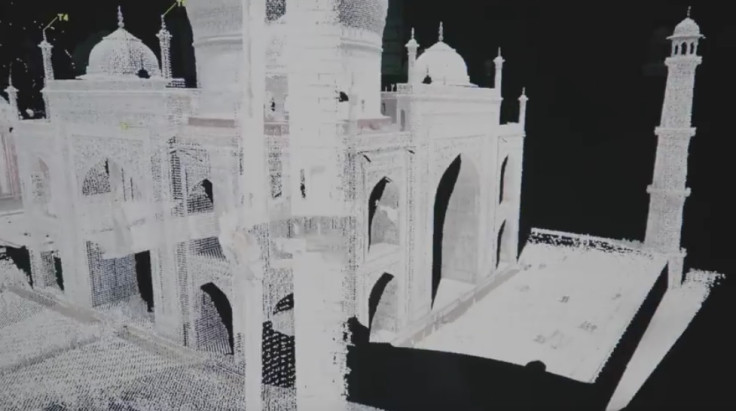Saving the Taj Mahal: 3D scanners record monument in minute detail to guard against damage

Researchers are racing against time to save one of the world's most famous heritage sites, safeguarding it from natural disasters. Following the Nepalese earthquake, Professor Krupali Krushche from Notre Dame University, has digitally documented the Taj Mahal. Her team explored areas of the site which are not open to the public, making their way through bat-infested minarets to photograph the monument in precise detail.
Krushche told IBTimes UK: "We scouted the minarets; they haven't been open to the public now for 65 years. People from the 19th and early 20th century have left signatures and graffiti in the minarets that tell us a lot about this time. There are hidden underground tunnels at Taj Mahal, and that's a fascinating part of the work we are just starting to explore."
The scientists are helping authorities to understand which areas are damaged and need immediate replacement. Their images are also helping to create the most accurate catalogue of information, particularly in restoring and replacing the building's inlay work.
"The project we are working on relates to documenting approximately 46 tombs and gardens that once lined the riverfront of Agra. We are using innovative and traditional techniques to document the site," Krushche said.

3D scanning technology
"At the Taj Mahal we are using techniques that allow us to understand the condition of the site and what measures are needed to conserve the site. In case of irreversible damage, these recording techniques can be used to reconstruct the site as necessary."
Krushche teaches architectural design and historic preservation in the Rome Program of the School of Architecture. In 2007 she founded and continues to direct the Dharma (Digital Historic Architectural Research and Material Analysis) research team, specialising in 3D documentation of World Heritage Sites.
Their work involves the use of a Leica 3D laser scanner which provides researchers with the most field-efficient means of data collection. Recently the team has also carried out research to monitor seismic effects on historic buildings.
The work includes 3D scanning of the Taj Mahal using Leica P20 or C10 scanners which have up to 1mm accuracy. GigaPan technology is used for photo documentation of the site with the same accuracy levels and same locations. The superimposition of the two techniques creates a 3D photographic documentation of the site and any damage it has suffered on micro and macro scales.

Pollution damage
The latest government efforts to control pollution around the Taj Mahal are failing, according to India's Supreme Court. A bench of justices condemned the Uttar Pradesh government for neglecting and "sleeping over" the issue of depleting green cover around Taj Mahal, according to the Times of India. The judges have asked for involvement of civil society in planting and preserving trees in Taj Trapezium Zone (TTZ) to protect the white marble mausoleum from pollution.
"Local authorities are taking the necessary steps to reduce pollution around the Taj Mahal," Culture Minister Mahesh Sharma told the Tribune. "The Archaeological Survey of India (ASI) is regularly monitoring ambient air quality around Taj Mahal and attending to essential conservation, preservation and environmental development works to reduce the effect of pollution on marble surface."
Sharma added that the iconic mausoleum was in a good state of preservation due to the consistent efforts of the agency. "Conservation work at Taj Mahal is attended to regularly by the ASI. Wherever necessary, advice from reputed government agencies in the country is taken for better care of the monument".
History of the Taj Mahal
Described by Nobel laureate Rabindranath Tagore as "the teardrop on the cheek of time", the 17th century monument created by Mughal emperor Shah Jahan is one of the most iconic symbols of India.
He constructed the Taj (which means "crown," and is also a form of the Persian word "chosen") as a final resting place for his favourite wife, Arjumand Banu, better known as Mumtaz Mahal (Chosen One of the Palace).
A court poet recorded the emperor's despair at her death in 1631, at the age of 38, after giving birth to the couple's 14th child: "The colour of youth flew away from his cheeks; The flower of his countenance ceased blooming." He wept so often "his tearful eyes sought help from spectacles."
To honour his wife, Shah Jahan decided to build a tomb so magnificent that it would be remembered throughout the ages. Today the magnificent marble monument attracts around 25,000 tourists a day, sometimes peaking at 45,000, according to the Archaeological Survey of India (ASI).
© Copyright IBTimes 2025. All rights reserved.






















